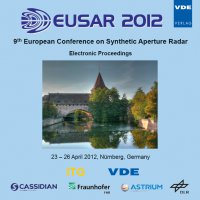SubSAR – A Scheme for the Discrimination Between Surface and Sub-Surface Features at Large Stand-Off Distances
Conference: EUSAR 2012 - 9th European Conference on Synthetic Aperture Radar
04/23/2012 - 04/26/2012 at Nuremberg, Germany
Proceedings: EUSAR 2012
Pages: 3Language: englishTyp: PDF
Personal VDE Members are entitled to a 10% discount on this title
Authors:
Morrison, Keith (Dept. of Informatics & System Engineering, Cranfield University, Shrivenham, Swindon, UK)
Bennett, John (Dept. of Electronic & Electrical Engineering, Sheffield University, Mappin Street, Sheffield, UK)
Nolan, Matt (Institute of Northern Engineering, 455 Duckering Bldg, University of Alaska Fairbanks, AK, USA)
Abstract:
We report on SubSAR, a new application of DInSAR for the discrimination between surface and sub-surface features, at large stand-off distances applicable to airborne and satellite measurements. This is in sharp contrast to current techniques, where discrimination relies on close-in measurement of the scene, usually by scanning across the surface with a ground-penetrating radar. Close-in schemes rely on an ability to spatially isolate vertically, the surface and sub-surface backscatter returns, such that range-layover severely limits practical stand-off distances. DInSAR phase has classically been used to provide sub-wavelength measurements of surface deformation. However, recent studies have indicated that the phase signature can also be used as a proxy for soil moisture changes, and the SubSAR technique utilizes that relationship to distinguish between surface and buried features. It is proposed the new scheme will have diverse applications in remote sensing, including soil moisture monitoring and humanitarian demining.


